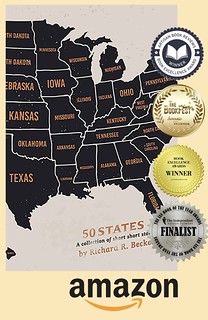Two years ago, Bob Lachky had enough creative vision to become executive vice president of global industry development for Anheuser-Bush, Inc., which made him responsible for representing the company to alcohol beverage industry groups nationally and abroad, and to enhance the overall image of the beer industry with both the public and within the industry. Fresh off seven consecutive wins in the Super Bowl’s USA Today Ad Meter Poll, he seemed like the perfect match.
“I am excited and inspired by the challenge that has been put before me. And, after leading our creative team to seven consecutive wins in the Super Bowl’s USA Today Ad Meter Poll, I am grateful to be leaving my job as head of brand creative on a high,” Lachky said then.
More recently however, he showed that oh-too-transparent side as he delivered an acid-tongued review of Bud TV with a quotable or two that rivals Lauren Caitlin Upton, Miss South Carolina.
“…as you can tell, I was doing something else at the time, I think had a little stronger sell on this,” said Lachky during Masters of Marketing. “… kind of a flawed idea but a brilliant concept.”
Okay. Sure, Lachky is technically accurate, in that a concept is an abstract and an idea is a visible representation of a concept, but the rest of the summed review of his company’s own communication effort reveals Bud TV wasn’t such a brilliant concept at all. And based on the previews alone, it’s easy to see Bud TV is exactly how Lachky described it: a purposeless waste that featured ‘bizarre’ content and no branding. (A classic example of more buzz, less outcome.)
None of the content is ‘bizarre’ enough to be that funny except one gem on YouTube. The rest is simply a good indication of why Bud TV captures about 50,000 unique visitors per month (that’s on par with some mid-level blogs). Still, the company says it has faith, enough to let all it all run through 2008.
Not to be deterred, Tony Ponturo, vice president of global media and sports/entertainment marketing at Anheuser-Bush, recently tried to put the decision in perspective as the company intends to invest more in entertainment and the digital space.
"We wanted to get through the step of, 'OK, should we continue into '08 as we build our marketing plans?' and that was the decision," he said during a keynote speech at Online Media, Marketing & Advertising Conference & Expo. "I think it (Bud.TV) is something that could have an ending someday, but I think if we keep learning from it and if we keep seeing assets from it ... then it makes sense to continue the site.”
You can catch more of Bud TV talk over at iMedia. But right out of the gate, Ponturo tells us why Bud TV doesn’t work.
“We wanted to go into this sort of new world because of what we are seeing, and what our research suggests, that adults 21 to 27 are using the Internet minimally six hours a week, and obviously that's growing.”
No, no, no. If you want it to work, stop talking about why you did it and start talking about what it promises to deliver (just make sure it delivers something, which it doesn’t at the moment). And, you might ask Lachky to stop poking at the ashes with critiques that reinforce the idea that Bud TV is dead anyway. (I'm still wondering what he was doing while millions were poured away.)
So here are are quick fixes. If you want to save Bud TV, dump the ego-creative concepts and provide content people who drink beer want to see. Like, um, how to brew beer at home. Or maybe, follow a NASCAR driving team around the circuit (oh right, you more or less gave that content model over to Coors). Or maybe, you could cover the Beer Pong championship. Or maybe, you could put in some product placement, since, well, they are your shows. Or maybe, ask people who watch Bud TV to provide some content from time to time.
I dunno. Whatever Bud does next, let’s just hope they don’t launch a completely different channel and spread out their already thin fan base. Oh right, they already did that too, several times over.
Not to worrry, there is always a bright side: after spending $30 million for a site that is less than fluid, some people on the team will likely need a beer in 2008. It brings new meaning to the term case study.

“I am excited and inspired by the challenge that has been put before me. And, after leading our creative team to seven consecutive wins in the Super Bowl’s USA Today Ad Meter Poll, I am grateful to be leaving my job as head of brand creative on a high,” Lachky said then.
More recently however, he showed that oh-too-transparent side as he delivered an acid-tongued review of Bud TV with a quotable or two that rivals Lauren Caitlin Upton, Miss South Carolina.
“…as you can tell, I was doing something else at the time, I think had a little stronger sell on this,” said Lachky during Masters of Marketing. “… kind of a flawed idea but a brilliant concept.”
Okay. Sure, Lachky is technically accurate, in that a concept is an abstract and an idea is a visible representation of a concept, but the rest of the summed review of his company’s own communication effort reveals Bud TV wasn’t such a brilliant concept at all. And based on the previews alone, it’s easy to see Bud TV is exactly how Lachky described it: a purposeless waste that featured ‘bizarre’ content and no branding. (A classic example of more buzz, less outcome.)
None of the content is ‘bizarre’ enough to be that funny except one gem on YouTube. The rest is simply a good indication of why Bud TV captures about 50,000 unique visitors per month (that’s on par with some mid-level blogs). Still, the company says it has faith, enough to let all it all run through 2008.
Not to be deterred, Tony Ponturo, vice president of global media and sports/entertainment marketing at Anheuser-Bush, recently tried to put the decision in perspective as the company intends to invest more in entertainment and the digital space.
"We wanted to get through the step of, 'OK, should we continue into '08 as we build our marketing plans?' and that was the decision," he said during a keynote speech at Online Media, Marketing & Advertising Conference & Expo. "I think it (Bud.TV) is something that could have an ending someday, but I think if we keep learning from it and if we keep seeing assets from it ... then it makes sense to continue the site.”
You can catch more of Bud TV talk over at iMedia. But right out of the gate, Ponturo tells us why Bud TV doesn’t work.
“We wanted to go into this sort of new world because of what we are seeing, and what our research suggests, that adults 21 to 27 are using the Internet minimally six hours a week, and obviously that's growing.”
No, no, no. If you want it to work, stop talking about why you did it and start talking about what it promises to deliver (just make sure it delivers something, which it doesn’t at the moment). And, you might ask Lachky to stop poking at the ashes with critiques that reinforce the idea that Bud TV is dead anyway. (I'm still wondering what he was doing while millions were poured away.)
So here are are quick fixes. If you want to save Bud TV, dump the ego-creative concepts and provide content people who drink beer want to see. Like, um, how to brew beer at home. Or maybe, follow a NASCAR driving team around the circuit (oh right, you more or less gave that content model over to Coors). Or maybe, you could cover the Beer Pong championship. Or maybe, you could put in some product placement, since, well, they are your shows. Or maybe, ask people who watch Bud TV to provide some content from time to time.
I dunno. Whatever Bud does next, let’s just hope they don’t launch a completely different channel and spread out their already thin fan base. Oh right, they already did that too, several times over.
Not to worrry, there is always a bright side: after spending $30 million for a site that is less than fluid, some people on the team will likely need a beer in 2008. It brings new meaning to the term case study.























